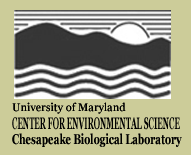One of the more difficult problems concerning the use of field measurements is scaling up from specific site measurements to estimates of the magnitude of a process for a full estuarine system. While all measurements share this difficulty, process measurements are particularly difficult to scale up because there are usually a limited number of measurements possible because of the time consuming nature of the measurements and the expenses involved. So, what can be done? One approach we have taken with sediment-water nutrient exchange measurements is to relate a limited number of expensive flux measurements to simple, cheap and rapid measurements of environmental variables that can be related to sediment nutrient fluxes. For several years in the Patuxent River estuary we made sediment ammonium flux measurements at about 10 sites and made rapid, cheap measurements of such variables as DO, sediment Eh, sediment chlorophyll content and bottom water nutrient concentrations at an additional 27 sites. We examined the data set for strong relationships between flux and in-situ conditions and found that summer period ammonium flux was well predicted, even for multiple years, by sediment chlorophyll (an index of labile organic matter that is available for decomposition) and sediment Eh (probably an indicator of nitrification potential). We used this statistical model to generate ammonium fluxes at the 27 stations where no direct flux measurements were made and then used the total of 37 flux estimates to contour flux magnitude throughout the full estuarine system. Estimates of whole estuary flux were very dependent on sample size. It turned out that largest ammonium fluxes were associated with deep stations having negative Eh values and high chlorophyll concentrations. Shallow stations had lower sediment chlorophyll concentrations and generally positive sediment Eh values.
